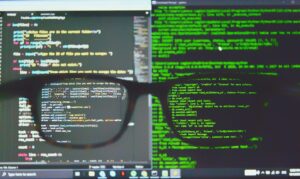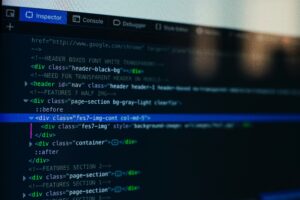Everyone is talking about Python and for a good reason. With a rapidly growing group of web dev, machine learning, data science, and many more. It’s a language that easily opens the programming to simply access the world.
In the house of server-side software languages, Python is appraised as easy to write, learn, and read. It is true that every huge business in the world is using this language and working on this, and it is also perfect for quick and straightforward prototypes.
This is a very well-known programming language, designed by the recommendation of Netflix algorithm to the software that controls all over things. It is a generic language that provides a proper range of applications to web Development or any data.
Let’s take a closer look at what Python is, what it can do, and how you can start learning it.
Short History Of Python
Python is a language that’s focused on simplicity and ease of use. It has a multiparadigm which provides programmers a structural, writing code, and other functional styles.
In today’s generation, it has covered all the fields, such as web development and machine learning (frameworks like TensorFlow and Keras). After JavaScript, it is the most used programming language in the world.
- Python laid its foundation in the late 1980s.
- The execution was started in December 1989 by Guido Van Rossum at CWI in Netherland.
- In February 1991, Guido Van Rossum published the code (labeled version 0.9.0) to alt. sources.
- In 1994, Python 1.0 was released with new features like lambda, map, filter, and reduce.
- Python 2.0 added new features such as list comprehensions, garbage collection systems.
- On December 3, 2008, Python 3.0 (also called “Py3K”) was released. It was designed to rectify the fundamental flaw of the language.
- The programming language of ABC is told b the predecessor, which has the capability of interfacing the amoeba operating system and handles it appropriately.
- The following programming languages influence: ABC language, Modula-3.
What is Python used for?
Python has been adopted by many non-programmers, like scientists and accountants, for day-to-day tasks, like organizing finances, and we’ve expanded on these with many other examples below, It can be used for:
- AI and machine learning
As we all know that python is such a simple, flexible programming language, so it is great for Artificial Intelligence (AI) projects. In fact, Python is among the favorite languages among data scientists, and there are many machine learning and AI libraries and packages available.
If you are keen on applications, then deep learning of knowing the information about AI Microsoft Azure ExpertTrack can help you develop your skills in these areas. You can discover the uses of Python and deep learning while boosting your career in AI.
- Data analytics
Much like AI and machine learning, data analytics is another rapidly developing field that utilizes Python programming. At a time when we’re creating more data than ever before, there is a need for those who can collect, manipulate and organize the information.
Python for data science and analytics makes sense. This language is very easy to learn and flexible, meaning it’s relatively easy and quick easy to use for analyzing data. Because if you are working with some huge amount of information, then it will be useful for manipulating data and carrying out ceaseless tasks.
You can learn about data analytics using Python by joining Bootcamp, which will help you develop practical data analytics skills.
- Data visualization
Data visualization is another popular and developing area of interest. Again, it plays into many of the strengths of Python. As well as its flexibility and the fact it’s open-source, Python provides a variety of graphing libraries with all kinds of features.
Whether you’re looking to create a simple graphical representation or a more interactive plot, you can find a library to match your needs. Examples include Plotly and Pandas Visualization. The possibilities are vast, allowing you to transform data into meaningful insights.
- Programming applications
You can program all kinds of applications using Python. The general-purpose language can be used to read and create file directories, create GUIs and APIs, and more. Whether it’s blockchain applications, audio and video apps, or machine learning applications, you can build them all with this programming language.
Why It Is Important To Learn Python
A programming language can also be called a computer language which has been used to create software developer programs, scripts, and some other set of instructions for computers to execute. With the evolution of increasing demands for a programming language, Python takes a step in the technological world with excellent efficiency. It is a modern and most wanted programming language across the globe. Python has applications in Data Science or Big Data. As the demand for python is increasing fastly the aspirants are simply getting the skills.
If you want to learn Python but you are confused about “Should I learn it?” Then here are some of its points to give answers to all your questions.
Python is an interpreted, high level and generally based program language.
These programming languages will give you the amazing opportunity to learn about the various courses in the machine learning process and data science. Python is essential in learning by developers, data scientists, software engineers, and even hackers because it is the most versatile and object-oriented program.
You can use it for pretty Much Anything:
One best purpose of learning Python is that you can apply it to a variety of projects. Some following fields are associate with it:
- Data science
- Scientific and mathematical computing
- Web development
- Basic game development
- Computer graphics etc
What are the benefits of using Python for web development?
The diverse application of the Python language results from the combination of features that give this language an edge over others. Some of the benefits of programming in Python include:
- Presence of Third Party Modules:
The Python Package Index (PyPI) contains numerous third-party modules that make Python capable of interacting with most of the other languages and platforms.
- Extensive Support Libraries:
It is having a standard library that holds maximum areas on the internet protocols, web services tools, and operating system interfaces. Most of the high programming languages are already been scripted under the library of standardization. Which can significantly reduce the length of code written.
- User-friendly Data Structures:
Python has a dictionary data and built-in list for using to construct the fast runtime of data structure. Further, it also provides the option of dynamic high-level data typing, which reduces the length of support code that is needed.
- Productivity and Speed:
Python has a clean object-oriented design, provides enhanced process control capabilities, and possesses strong integration and text processing capabilities and its own unit testing framework, all of which contribute to the increase in its speed and productivity. This programming language is considered a viable option for building complex multi-protocol network applications.
Difference between R and Python
The main distinction between the two languages is in their approach to data science. Large communities support both open-source programming languages, continuously extending their libraries and tools. But while R is mainly used for statistical analysis, Python provides a more general approach to data wrangling. It is a multi-purpose language, much like C++ and Java, with a readable syntax that’s easy to learn.
On the other hand, R is created by the leans and specialized analytics into the statistical models. R is also used in data science with the deep few lines of code and fantastic data visualizations. For example, you might use R for customer Genomics research and behavior analysis.
What is the CNN algorithm in?
A CNN (Convolutional Neural Network) is a profound language of learning algorithm that can make ut up the images, assign importance (learnable weights and biases) to different aspects/objects on the pitchers, and be able to evolve One to the other. The pre-processing required in a ConvNet is much lower as compared to other classification algorithms. While in primitive methods, filters are hand-engineered, with enough training, as this ConvNets is having the ingenuity to learn these filters.
Final Thought:
Python is a simple, adaptable programming language, and it is excellent for beginners. Although, even google has also made Python or the primary programming language. The basics will help you gain a lot in the exciting field of your choice and a good position. Data science is likely your best bet, but you will be able to learn Python programming everywhere you go.
I hope that our article was helpful to you.
Also, Read Some Interesting Information About What Do You Understand By Id Tech.
How useful was this post?
Click on a star to rate it!
Average rating 5 / 5. Vote count: 2
No votes so far! Be the first to rate this post.




